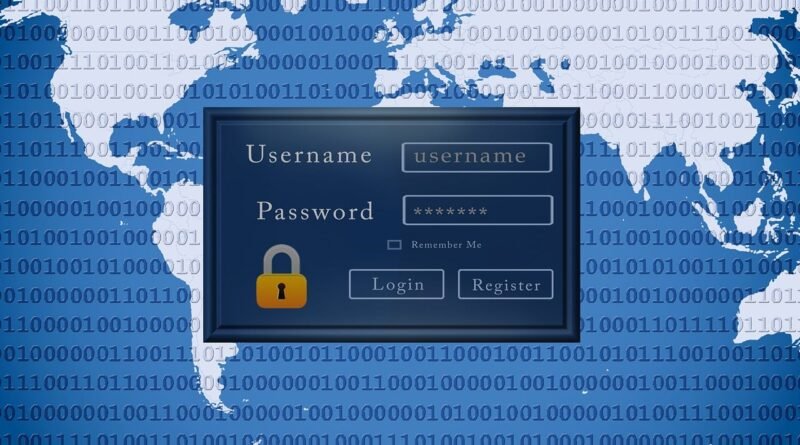The Unfolding Crisis: 16 Billion Leaked Credentials and the Urgent Evolution of Cybersecurity
In a stark reminder of the ever-present dangers in our interconnected world, recent reports have sent shockwaves through the cybersecurity landscape: an unprecedented 16 billion login credentials, encompassing a vast array of platforms from tech giants like Apple and Google to social media mainstays and even government services, have been found exposed. While not necessarily a single, centralized breach, this monumental aggregation of data, often collected via insidious infostealer malware, serves as a chilling testament to the escalating sophistication of cyber threats and unequivocally highlights the critical and immediate need for a paradigm shift in how we approach digital security.
This incident, described by some as the largest credential exposure in history, isn’t just about numbers; it’s about the very fabric of our digital lives being unraveled. With login details, cookies, tokens, and session metadata circulating, the potential for widespread phishing attacks, credential stuffing, identity theft, and account takeovers is immense. The sheer volume and “fresh, weaponizable” nature of this data mean that even individuals with limited technical expertise can gain access to compromised information on the dark web, making almost everyone vulnerable.
The implications are profound. For individuals, it means heightened vigilance, immediate password changes, enabling multi-factor authentication (MFA) on all accounts, and utilizing password managers to create unique, strong passwords. For organizations, it’s a deafening siren call to fundamentally re-evaluate and fortify their cybersecurity postures.
The Imperative Shift: Zero Trust Architecture (ZTA)
In response to such widespread compromise, the traditional perimeter-based security model – where everything inside the network is implicitly trusted – is proving increasingly obsolete. The latest data breach underscores why a fundamental shift to a Zero Trust Architecture (ZTA) is no longer an option, but a critical imperative.
Zero Trust operates on the principle of “never trust, always verify.” It assumes that no user, device, or application, whether inside or outside the network, should be implicitly trusted. Every access request must be authenticated, authorized, and continuously validated before access is granted to any resource. This approach dramatically reduces the attack surface and contains breaches by preventing lateral movement within a compromised network.
Key tenets of ZTA include:
- Microsegmentation: Breaking down network perimeters into smaller, isolated segments, limiting the scope of any potential breach.
- Least Privilege Access: Granting users and devices only the minimum access necessary to perform their tasks.
- Continuous Monitoring and Authentication: Verifying identity and device posture continuously, not just at the point of initial access.
- Device Trust: Evaluating the security posture of every device attempting to access resources.
Implementing ZTA is a complex undertaking, requiring a holistic approach that integrates technology, policy, and processes. However, as the digital landscape becomes increasingly permeable, it’s the most robust defense against the evolving threat vectors.
Fortifying the Foundation: Supply Chain Security
The interconnectedness of our digital world also means that a vulnerability in one link of the chain can compromise the entire system. The current credential leak highlights the urgent need for enhanced supply chain security. Many of the leaked credentials were reportedly gathered via infostealer malware, often spread through compromised third-party software or services.
Organizations are increasingly reliant on a vast ecosystem of vendors, suppliers, and service providers. A breach in any one of these external entities can open a backdoor into an organization’s own systems. Best practices for supply chain security now involve:
- Rigorous Vendor Risk Management: Thoroughly vetting all third-party partners for their security practices and continuously monitoring their security posture.
- Secure Software Development Life Cycle (SSDLC): Ensuring that all software, whether developed internally or acquired externally, adheres to the highest security standards.
- Contractual Security Clauses: Including robust security requirements and audit rights in all vendor contracts.
- Proactive Threat Intelligence Sharing: Collaborating with industry peers and security agencies to stay informed about emerging threats targeting the supply chain.
The AI Advantage: Real-Time Threat Detection and Response
In the face of the sheer volume and velocity of modern cyberattacks, human-led security operations often struggle to keep pace. This is where Artificial Intelligence (AI) in cybersecurity emerges as a game-changer. AI-powered systems are rapidly becoming indispensable for real-time threat detection and automated response.
AI’s capabilities in this domain include:
- Behavioral Analytics: Learning the “normal” behavior of users, networks, and applications to detect anomalies that indicate malicious activity, even for previously unknown (zero-day) threats.
- Predictive Analysis: Utilizing machine learning algorithms to analyze historical data and identify patterns that precede attacks, enabling proactive defense.
- Automated Incident Response: Initiating immediate actions like quarantining infected systems, blocking malicious IP addresses, or shutting down compromised accounts, drastically reducing response times and minimizing damage.
- Threat Intelligence Processing: Sifting through vast amounts of global threat intelligence to identify relevant threats and update defense mechanisms in real-time.
- Reducing False Positives: AI’s ability to accurately distinguish between legitimate activities and true threats minimizes alert fatigue for security teams, allowing them to focus on critical incidents.
Companies are leveraging AI to power advanced Security Information and Event Management (SIEM) systems, Endpoint Detection and Response (EDR) platforms, and Security Orchestration, Automation, and Response (SOAR) solutions, creating a more intelligent and responsive defense.
A Call to Action
The 16 billion leaked credentials serve as a stark and urgent reminder that cybersecurity is no longer an IT niche; it’s a fundamental business imperative and a societal responsibility. As cyber threats continue to evolve in sophistication and scale, a proactive and adaptive approach is essential. The widespread adoption of Zero Trust Architecture, a heightened focus on supply chain security, and the intelligent integration of AI are not just trends – they are the essential pillars upon which a resilient digital future will be built. The time for incremental improvements is over; it’s time for a radical reimagining of our cybersecurity defenses.

